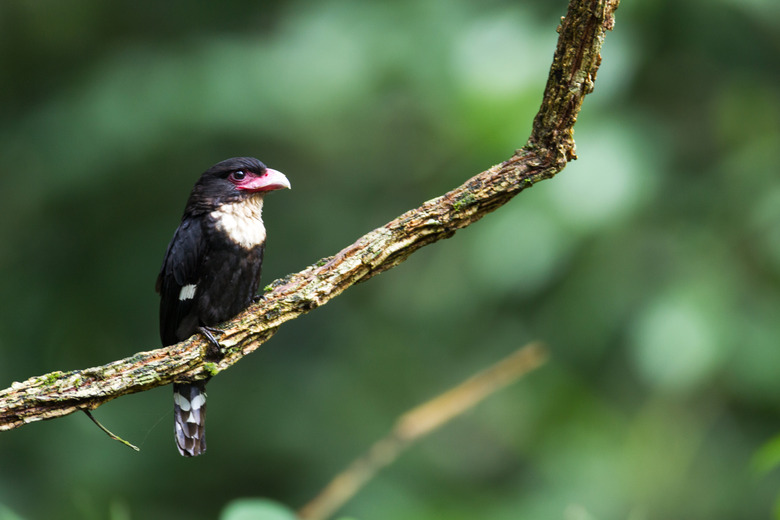Life Forms That Can Survive In The Humid Subtropical Climate
There are several designated climate types around the world. The humid subtropical climate describes the climate of the eastern edges of continents in the mid-latitudes.
Given the overall balmy temperatures of these areas, many species can survive in the humid subtropical climate.
Subtropical Definition
Subtropical Definition
The subtropical definition pertains to those regions just outside tropical zones. These mid-latitude areas lie between 20 and 35 degrees north or south of the equator.
Regions such as the southeastern United States, eastern Australia, southeast China and parts of South America fall under the subtropical definition. The parts of the United States that are considered humid subtropical including the coastal Southern states from Virginia to Florida, and in the west to Missouri stretching down to Louisiana.
What Is Subtropical Climate?
What Is Subtropical Climate?
A subtropical climate is the climate often found along eastern portions of the world's continents, outside the tropical zone as described by the subtropical definition.This climate is characterized by a long growing season, typically average rainfall over the course of the year, hot, humid summer days and cold to mild winters.
Occasionally, winters can dip to freezing points, but this is not a common scenario. This tends to occur further away from the equator and at higher elevations. Approximately 30 to 65 inches of precipitation fall annually in the humid subtropical climate. These conditions and abundant sunlight provide ample opportunity for life forms to grow in the climate.
Vegetation Found in the Humid Subtropical Climate
Vegetation Found in the Humid Subtropical Climate
Plants found in the humid subtropical climate tend to be shrubs, bushes and a combination of broadleaf and evergreen plants and trees. Ferns and palms are also prevalent. Scrub pines and scrub oaks, magnolia, beech, live oak, grasses and herbs are common in such places as subtropical Florida. Cypress, pop ash, cedars, bays, tupelo and black gum are additional tree examples.
Crops such as wheat, soybeans and maize flourish in the humid subtropical climate. The long growing season leads to higher yields. However, extreme weather conditions and heat stress can adversely affect these crops.
Animals Found in the Humid Subtropical Climate
Animals Found in the Humid Subtropical Climate
The warmth and availability of plants ensures plentiful habitats for many different kinds of animals in the humid subtropical climate. Numerous birds, reptiles, amphibians and mammals ply such regions. Larger mammals found in these climates include panthers, deer and capybaras.
Because of the warmth, cold-blooded animals do well in a humid subtropical climate. Reptiles such alligators, turtles and snakes are plentiful. Amphibians such as frogs thrive. Insect life is rampant.
The regions of the world that experience the humid continental climate harbor a great diversity of life forms. However, the balance for these regions has shifted due to changes in climate as pollution and increased human development affect them over time.
Climate Change Effects
Climate Change Effects
**Climate change** threatens the stability of life forms that can survive in the humid subtropical climate. Heat waves and violent storms are expected to affect the quality of life of organisms in this climate zone.
Increased heat stress adversely affects crops, leading to smaller yields for some species. Maize production is expected to drop due to climate change. Pollen viability is also negatively affected by higher heat. Excess water and heat lead to more pests and diseases.
The Northern Hemisphere has proven to be more vulnerable to warming than the Southern Hemisphere. In the Southeast of the United States, people, animals and plants are all at risk from increasing temperatures.
Because it is harder to cool the body in a humid climate, heat-related illness and death are risks. More prevalent heat waves due to climate change pose an increasing threat to those who live in humid subtropical climates.
Cite This Article
MLA
Hermance, Dianne. "Life Forms That Can Survive In The Humid Subtropical Climate" sciencing.com, https://www.sciencing.com/life-survive-humid-subtropical-climate-8660303/. 22 November 2019.
APA
Hermance, Dianne. (2019, November 22). Life Forms That Can Survive In The Humid Subtropical Climate. sciencing.com. Retrieved from https://www.sciencing.com/life-survive-humid-subtropical-climate-8660303/
Chicago
Hermance, Dianne. Life Forms That Can Survive In The Humid Subtropical Climate last modified March 24, 2022. https://www.sciencing.com/life-survive-humid-subtropical-climate-8660303/
